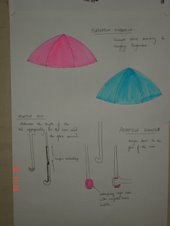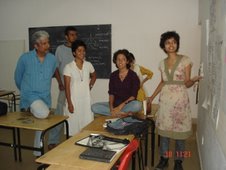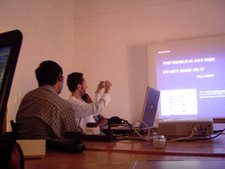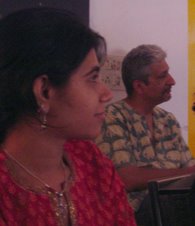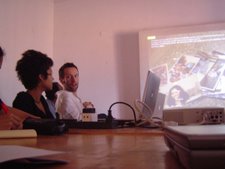ASSIGNMENTS FOR MONDAY APRIL 23
1. Individual exercise
Take the object that was randomly assigned to you.
Objects
1. Flute – Pallavi Manchi
2. Booba – Ruchika, Priyam
3. Spectacles/Shades – Tariq, Dhanyaa
4. Ghatam –Khushboo, Samia
5. Google – Shyamli, Hazel
6. ATM - Arjun
7. Smarthoovers - Bharat
8. Scarecrow - Nikhil
9. Amulet/Charm/Bracelet/Ring – Somesh, Govind
10. Grass chair - Pia
PROCESS
1. First, try and sense the object’s animistic affects and list them.
2. Isolate/extract at least three principles of animism from the object that product the affect(s).
3. List the conditionalities that follow the principles to generate the affect(s).
FORMAT: The format should be powerpoint using rich visuals and appropriate text.
GRADING: This exercise is being graded to test your learnings and understandings thus far.
2. Group exercise:
Instructions:
1. The groups that worked on their earlier objects will hand over their product explorations dossier to the new group that has been assigned to work with their respective object.
2. The objective of your assignment is to create an A-ha affect on the assigned object using some of the master principles.
MASTER LIST OF PRINCIPLES
Adaptability
Sensing and response - consciousness and sentience
Surprise
Dynamic - evolving, growing, regression - not static
Will
Ability to memorise and learn
Survival - resisting "death" or "abuse"
Needs nurturing
Life-span
Assumes responsibility
Forges relationship and communication experiences
Loopholes and imperfections
Narrative - myth, story, lore, history
Customisation - personalisation
Form - materiality, resemblance, tactility, organcity, biomimicry
Behaviours - resemblance, gesture, biomimicry
Breathes
Reproduces
Consumes
Beat-rhythm-pace
Quirkiness
States
Hackability
Framing/staging
Closer to skin
Merely representational (iconic) versus Experiential
WHO DOES WHAT?
Pia-Shyamli-Samia will do the umbrella.
Ruchika-Govind-Dhanyaa will do the chappal.
Nikhil-Bharat-Tariq will do the plate.
Somesh-Pallavi-Arjun will do the shoe and laces.
Hazel-Priyam-Khusbhoo will do the lock and key.
FORMAT:
Format for presentation is drawings on A3 sheets, one CONCEPT plus drawings per A3 sheet, and a total of at least three A-ha concepts per object/group.
Deadlines for both exercises:
Monday, April 23. 10.30 a.m. – All materials to be ready. Drawings to be pinned up neatly across classroom. Powerpoints ready for projection.
(THE END)
